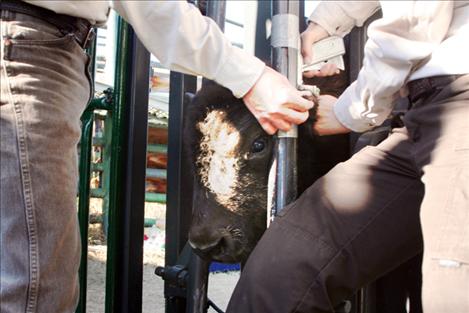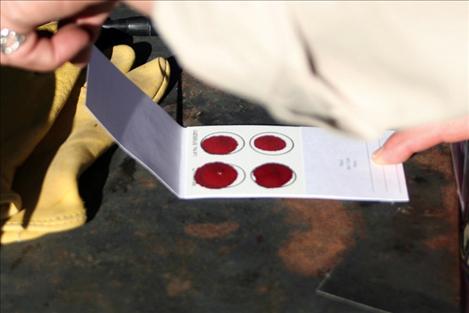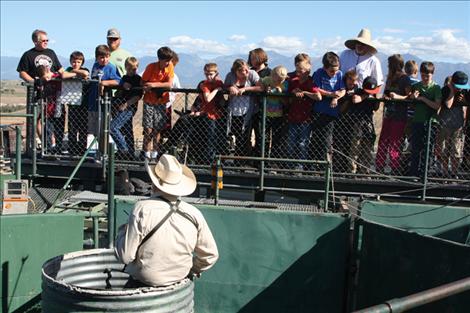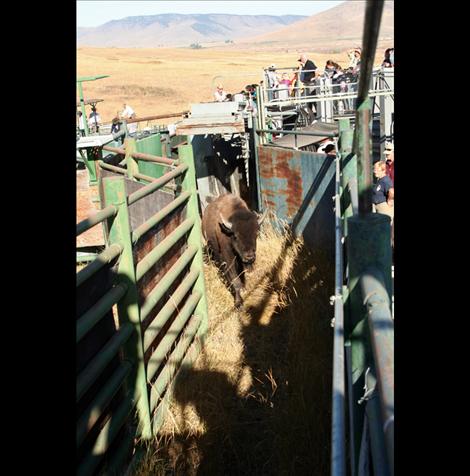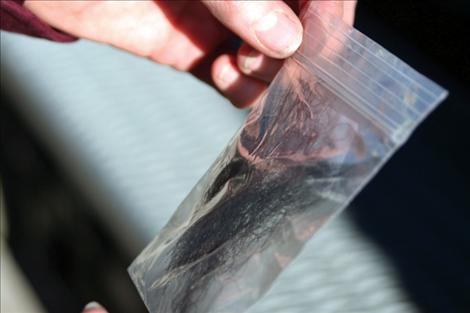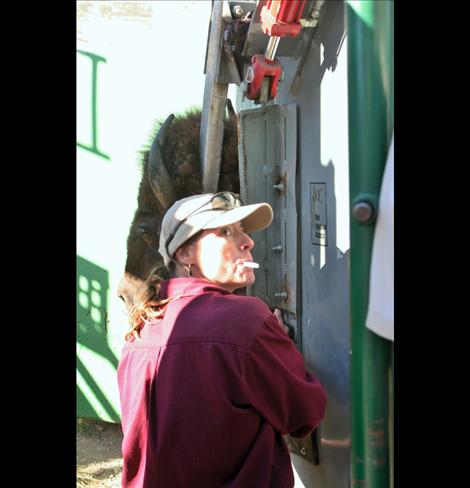Home on the Range
Hey savvy news reader! Thanks for choosing local.
You are now reading
2 of 3 free articles.
MOIESE – Getting wild bison into corrals to check for disease, inspect for health issues and take genetic samples can be a challenge, but at the National Bison Range, it’s necessary to maintain the 300 plus herd on 18,500 acres.
“They are 2,000 pounds of muscle,” Bison Range Deputy Manager Bob Rebarchik said of bulls at the range. “They are like marathon athletes. They can go 0-30 in about 40-steps and run 30-miles-an-hour for an hour. They are not like a cow in a pasture. They are tremendously powerful, wild animals.”
The Bison Range Roundup occurs annually and it’s open to the public. Hundreds of school children from Stevensville to Bigfork arrived in buses along with other visitors on a bright 80-degree Tuesday. Visitors headed for a long metal platform to watch U.S. Fish and Wildlife Service staff and volunteers work with the bison.
A young male bison weighing 365 pounds ran through the tunnel-like corral system until he ended up in the chute. For thirty seconds, he thrashed around rattling the metal until the sides of the chute gently squeezed in to keep him from hurting himself and those working on him. In the chute, he can’t move most of his body so he stands in place breathing heavily.
Small flaps on the side of the chute open within seconds. A quick glance determines his gender. A sample of tail hair is removed and bagged for genetic testing. Bison with unique genes stay in the herd.
“There are unique genes in this herd not occurring anywhere else,” said Wildlife Biologist Lee Jones, FWS wildlife coordinator. “We want to conserve bison as a species and keep the genetics of the herd. We also want to keep diversity high. Diversity determines whether a species survives 5,000 years from now.”
A long needle draws blood into a syringe from the calf’s side. The blood is blotted onto a white card in four places each the size of a quarter. The samples are used to test for disease.
“Every year we sample a proportion of the heard for disease in case a cow or even a bird with disease crosses the fence,” she said. “Even a trailer can have disease in it and that could get into the herd.”
A microchip about the size of a grain of rice goes in under the calf’s skin. A scanner detects the chip and the bison’s life history is recorded on a screen including weight, genetics and age. A visible tag goes into the bison’s ear to identify him. The procedure takes minutes.
Volunteer Kelsey Miller helped pull one of the ropes opening a gate leading into the chute. She watched as most of the bison ran through. A few walked, peeking around the shadows. Workers urged them to keep going.
“They are in the chute for about two minutes,” she said. “Some take longer. But if it takes too long, we let them go. Handling is a big issue. It’s all about them. We want to handle them as little as possible.”
Adjacent to the calf chute, Jones knelt on the cement in her double lined brown jeans next to the head of a bull. He’d lost his microchip. A rope around his horn held his head to the side. Jones injected a new chip behind his ear.
“I didn’t want to get my hand smashed,” she said of the rope. “I’ve never been hurt at the chute. We don’t handle the older animals unless we have to.”
As the bison come in off the range, they are kept in a coral while they wait for their turn at the chute, which is where an older bull decided to fight with a younger bull.
“We had a bison gored by another bison that had to be put down,” Rebarchik said. “It was a horn to the lung. These are wild animals and we can’t control everything. We try to minimize injuries and stress. We want to be hands-off and work them as little as possible. They are wild and we want to keep them that way.”
For the past 33 years, Sherrie McBurney has volunteered her veterinary experience to help with the bison. She said things have gotten safer than they were when she first started volunteering.
“Everything is constantly changing to make it better on the animals and safer for the people,” she said. “The chutes used to be wooden and now they’re metal. We’ve got a new hydraulic calf chute and it has a gentle squeeze on the animals. Everything used to be done on paper. Now, it’s on computer and much faster.”
Another major change in the past few years is the way the bison are directed towards the corals, which is by jeep instead of horse.
“They used to do a lot of whooping and hollering on horses,” Jones said. “The Jeep seems to be less stressful. It is about a change in philosophy. Years ago bison were seen as just big, hairy cattle. Now, they are respected wildlife.”
A number of yearlings and two-year-olds are sorted out from the herd during the roundup and sold or donated. Many go to help establish herds in other parts of the country.
“The land is not reproducing (in size) but the bison do,” Jones said. “The Bison Range has an ecological carrying capacity. We have to sell some of the animals to keep the herd from overpopulating the range.”
This year 19 bison were donated and 45 were sold.
“Two are going to CSKT to be butchered for the elders,” Rebarchik said.
Dawn Thomas explained the importance of bison as a historical resource for the Salish and Kootenai Tribes.
“It was a very important food source for us,” she said. “The Salish word for buffalo is qwiqway. We honor the buffalo with a song before the roundup.”
Jackson Kallay, 10, from the Ronan School District looked at a pile of bison bones set out by range staff on a hill above the corals. He said he liked the bones but preferred to see wildlife moving around. He noted the changes at the bison range.
“They don’t do horses anymore but it’s okay because the Jeep is safer,” he said heading towards the corals with his class. “The roundup is still just the coolest thing.”

















